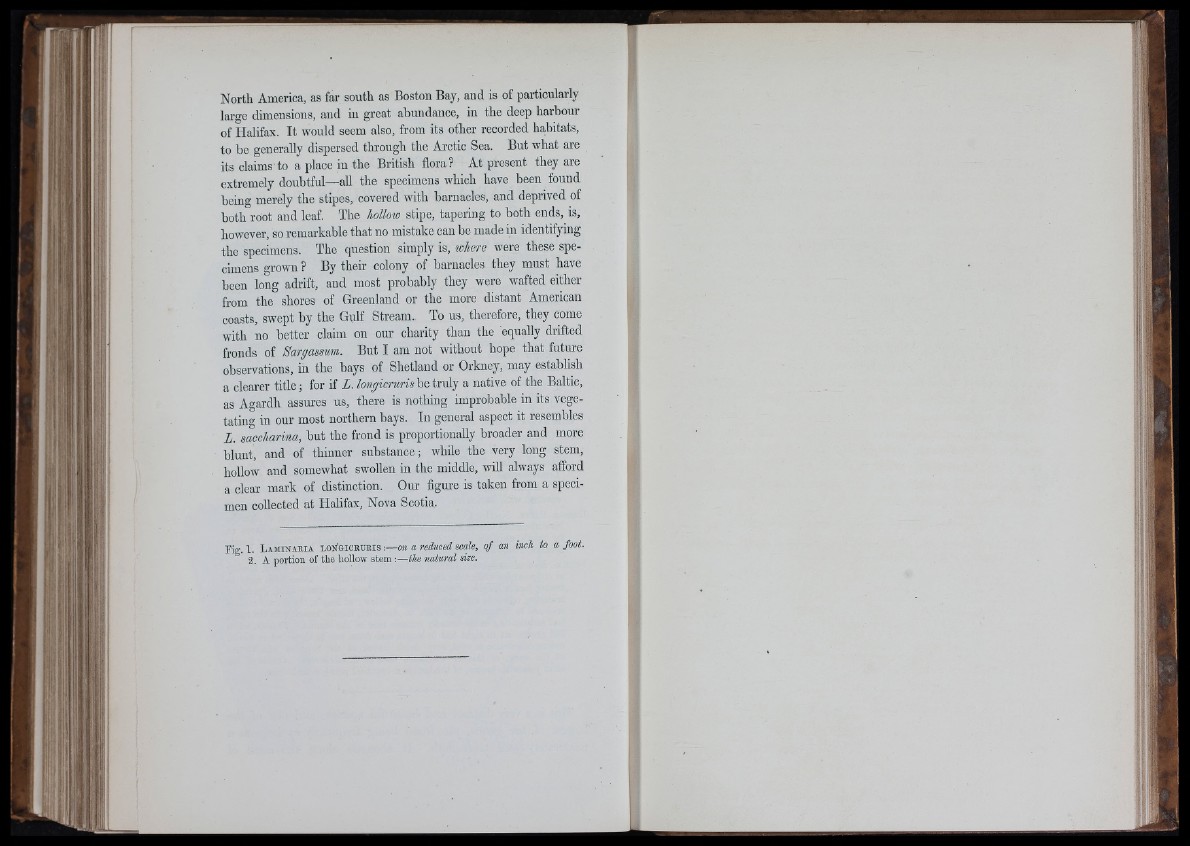
North America, as far south as Boston Bay, and is of particularly
large dimensions, and in great abundance, in the deep harbour
of Halifax. It would seem also, from its other recorded habitats,
to be generally dispersed through tbe Arctic Sea. But wbat are
its claims to a place in the British flora? At present they are
extremely doubtful— all the specimens which have been found
being merely the stipes, covered with barnacles, and deprived of
both root and leaf. Tbe hollow stipe, tapering to both ends, is,
however, so remarkable that no mistake can be made in identifying
the specimens. Tbe question simply is, where were these specimens
grown ? By their colony of barnacles they must have
been long adrift, and most probably they were wafted either
from tbe shores of Greenland or the more distant American
coasts, swept by the Gulf Stream. To us, therefore, they come
witb no better claim on our charity than the equally drifted
fronds of Sargassum. But I am not without hope that future
observations, in tbe bays of Shetland or Orkney, may establish
a clearer title; for if L. longicruris be truly a native of the Baltic,
as Agardh assures us, there is nothing improbable in its vegetating
in our most northern bays. In general aspect it resembles
L. saccharina, but the frond is proportionally broader and more
blunt, and of thinner substance; while tbe very long stem,
hollow and somewhat swollen in the middle, will always afford
a clear mark of distinction. Our figure is taken from a specimen
collected at Halifax, Nova Scotia.
I*
“ 3
Mf
I ’ig. 1. L am in a r i a l o n g i c r u r i s :— on a reduced scale, o f an inch to a fo o t.
° a. A portion of the hollow s tem :— the n a tu ra l size.
il